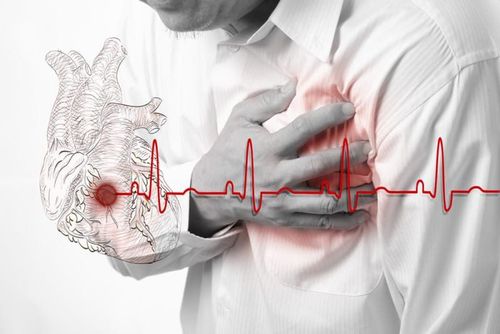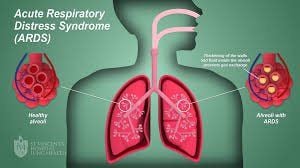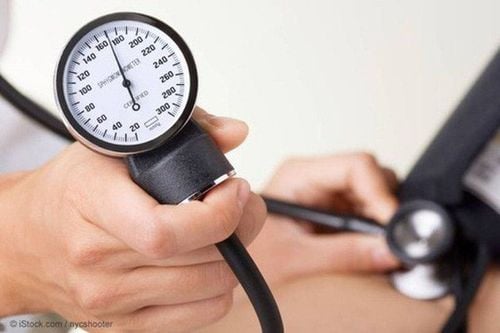This is an automatically translated article.
Acute pulmonary edema (OAP) is an acute state of asphyxiation due to many different causes, causing too much fluid to escape from the pulmonary capillaries, causing pulmonary edema. One of the main causes of acute pulmonary edema is cardiovascular diseases such as valvular heart disease, myocardial infarction, myocarditis, etc. This condition is called acute cardiogenic pulmonary edema.
1. What is acute cardiogenic pulmonary edema?
Acute cardiogenic pulmonary edema is excessive extravasation of pulmonary capillaries into the interstitial and alveolar tissues due to secondary increased hydrostatic pressure. This is one of three clinical forms of acute heart failure.
Acute pulmonary edema (OAP), which reduces gas exchange between the alveoli and capillaries, is an acute respiratory distress condition. Cardiogenic pulmonary edema is one of the most common causes of acute dyspnea in the emergency department. It is also one of the three clinical forms of acute heart failure.
Mechanism of acute cardiogenic pulmonary edema:
Increased hydrostatic pressure secondary to pulmonary venous hypertension. The volume of fluid exceeds the equilibrium capacity of the lymphatic system The volume of fluid in the interstitial tissue increases and eventually floods the alveoli. Mechanisms of cardiogenic pulmonary hypertension include:
Left atrial outflow tract obstruction Left ventricular dysfunction Left ventricular volume overload Left ventricular outflow tract obstruction where the most common mechanism of Cardiogenic pulmonary edema is a condition characterized by obstruction of the left atrium and impaired left ventricular function.
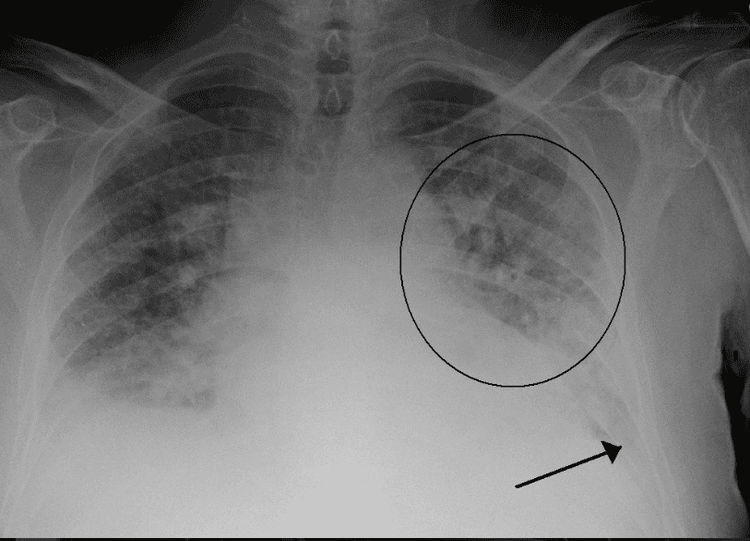
Hình ảnh phù phổi trên phim chụp X-quang
2. Causes of acute cardiac edema
Causes of acute cardiac pulmonary edema include:
Left atrial obstruction due to: Mitral valve stenosis Left atrial mucinous tumor Left atrial thrombosis Congenital heart : 3 atrial chambers Left heart failure: Failure of ventricular systolic function Left due to: Left ventricular myocardial infarction Outbreaks of chronic left heart failure Myocarditis Myocardial toxicity due to alcohol, cocaine, doxorubicin,... Chronic valvular heart disease such as: aortic stenosis, valvular regurgitation aorta, mitral regurgitation. Left ventricular diastolic dysfunction due to: Acute mitral regurgitation Chronic aortic regurgitation Chronic constrictive pericarditis Pericardial effusion Pericardial effusion Arrhythmia Left ventricular hypertrophy and cardiomyopathy Chronic aortic stenosis
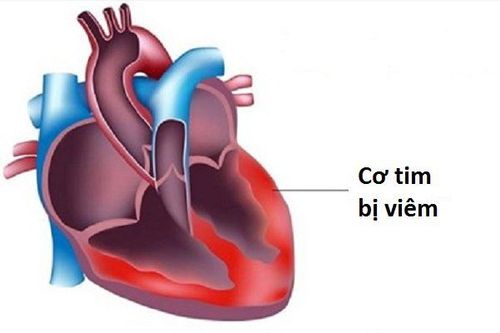
Viêm cơ tim gây phù phổi cấp do tim
Left ventricular volume overload due to the following causes: Left ventricular systolic dysfunction, non-compliance with treatment and diet, excessive perfusion. Acute aortic regurgitation causes left ventricular volume overload. This is the main mechanism causing acute pulmonary edema due to aortic regurgitation. Obstruction of left ventricular outflow tract due to the following causes: Acute aortic stenosis causes left ventricular outflow tract obstruction. Hypertrophic cardiomyopathy. Hypertension: increased peripheral resistance against the contractile force of the left ventricle. This is a form of left ventricular outflow tract obstruction.
3. Symptoms of acute cardiogenic pulmonary edema
Patient has the following symptoms:
Feeling short of breath, having to sit up to breathe. Anxiety, panic because of excessive suffocation Sweating Patients may experience chest pain if acute pulmonary edema due to acute myocardial infarction or dissecting aortic aneurysm causes acute aortic regurgitation. Initially, the patient coughs a lot, then coughs up pink foam. When examining, the doctor will see the following symptoms:
Fast pulse, very rapid breathing, often increased blood pressure due to stimulation of the sympathetic system. Consciousness disorder. Blue or bulging skin due to peripheral vasoconstriction, low cardiac output. Auscultated crackles are heard in the lungs, rales or wheezing may be heard. Auscultation may be difficult due to large rales, and a pathological heart sound may be heard indicating the cause of acute cardiac edema.

Điện tâm đồ giúp chẩn đoán nguyên nhân gây bệnh
Paraclinical tests include:
Routine blood test, chest X-ray: valuable in excluding pulmonary edema, and helping to suggest the cause and diagnose the stage of the disease. However, radiographs may appear after about 12 hours in cases of sudden pulmonary edema. The radiographic improvements also did not keep up with the clinical change. Therefore, this subclinical method cannot be used to monitor the patient's response to treatment. Electrocardiogram: This test has no role in definite diagnosis, but it does contribute in diagnosing the cause. Echocardiography: This is not a test that needs to be done right away. However, bedside echocardiography can help identify the source of acute cardiac edema. Other laboratory tests such as: blood protein, heart enzymes, pulse oxygen saturation, arterial blood gas, Brain natriuretic peptide,....
4. Treatment of acute cardiac pulmonary edema
Prevent the patient from suffocation by the following measures: Have the patient sit with both legs hanging down on the bed, or in a semi-recumbent half-sitting position. Administer oxygen through a nasal cannula at a rate of 6 - 10 liters/min if the patient is diagnosed early and is mild. If the patient is in severe form, has suffocation, coughs up a lot of pink and purple foam, it is necessary to intubate through the nose to suck sputum, pink foam, squeeze the ventilator with intermittent positive pressure. Reducing the volume of circulating blood by rooting the limbs, should be forced moderately to still catch the pulse. Use heart medications, diuretics, and antihypertensives if you have high blood pressure. Sedatives may be used on a case-by-case basis. To protect cardiovascular health in general and detect early signs of cardiovascular disease, customers can sign up for the Cardiac Screening Package - Basic Cardiovascular Examination of Vinmec International General Hospital. The examination package helps to detect cardiovascular problems at the earliest through tests and modern imaging methods. The package is for all ages, genders and is especially essential for people with risk factors for cardiovascular disease.
Customers can directly go to Vinmec Health system nationwide to visit or contact the hotline here for support.





